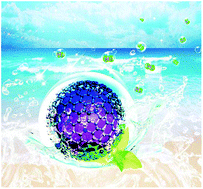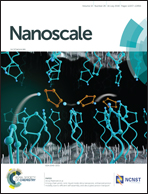Activating rhodium phosphide-based catalysts for the pH-universal hydrogen evolution reaction†
Abstract
Highly active and stable Pt-free electrocatalysts for hydrogen production via water splitting are of great demand for future energy systems. Herein, we report a novel hydrogen evolution reaction (HER) catalyst consisting of rhodium phosphide (Rh2P) nanoparticles as the core and N-doped carbon (NC) as the shell (Rh2P@NC). In a wide pH range, our catalyst not only possesses a small overpotential at 10 mA cm−2 (∼9 mV in 0.5 M H2SO4, ∼46 mV in 1.0 M PBS and ∼10 mV in 1.0 M KOH), but also demonstrates high stability. Importantly, all these performances are far superior to commercial Pt/C catalysts for HER. To the best of our knowledge, this is the highest HER performance reported so far in acidic and basic media. Density functional theory (DFT) calculations reveal that the introduction of phosphorus can significantly lower the proton adsorption energy of Rh/NC, thereby benefiting surface hydrogen generation. Moreover, this synthetic strategy for Rh2P@NC is also applied to other transition metal phosphides (TMPs)/nitrogen-doped carbon heterostructures (such as Ru2P@NC, Fe2P@NC, WP@NC etc.) with advanced performance toward HER and beyond.



 Please wait while we load your content...
Please wait while we load your content...